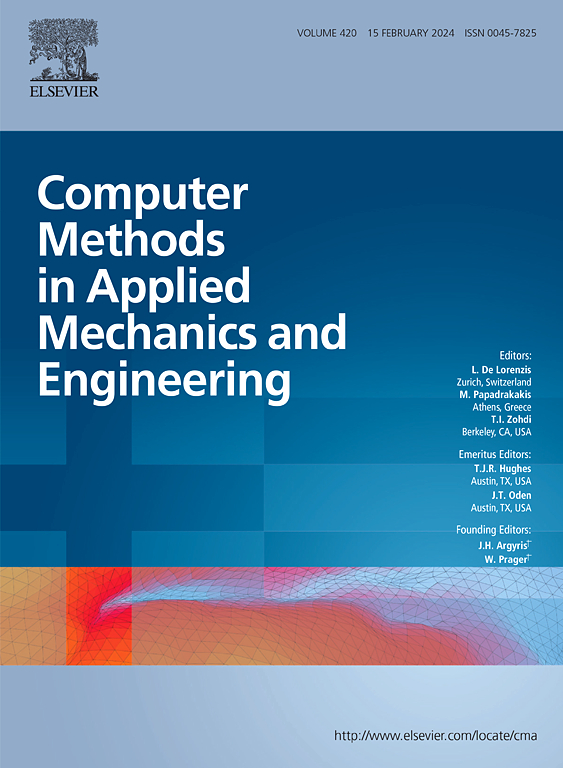A coupled immersed boundary method and isogeometric shell analysis for fluid–structure interaction of flexible and lightweight shells in high-Reynolds number flows
IF 6.9
1区 工程技术
Q1 ENGINEERING, MULTIDISCIPLINARY
Computer Methods in Applied Mechanics and Engineering
Pub Date : 2025-03-12
DOI:10.1016/j.cma.2025.117898
引用次数: 0
Abstract
This study presents an efficient numerical framework for simulating fluid–structure interactions (FSIs) involving flexible, lightweight shells subjected to high-Reynolds-number flows. By combining the immersed boundary method (IBM) and isogeometric analysis (IGA), the framework incorporates three major innovations: (1) a wall-modeling, direct-forcing, diffused-interface IBM tailored for FSI simulations with high-Reynolds-number turbulent flows, employing non-equilibrium explicit wall functions; (2) integration of the interface quasi-Newton inverse least-squares (IQN-ILS) method into the IBM/IGA framework to enhance the accuracy and efficiency of iterative Gauss–Seidel coupling in strongly coupled FSI scenarios; and (3) high-order solvers for both fluid and structural domains, featuring a sixth-order compact finite difference method (FDM) for fluid dynamics and isogeometric shell formulations for structural analysis. The framework is validated through four numerical test cases, including simulations of a hinged flag, an inverted flag, a membrane airfoil, and an air-supported membrane structure. The results demonstrate good agreement with reference data, showing the framework’s efficiency, accuracy, and applicability for solving large-scale shell-related FSI problems across diverse engineering and scientific domains.
求助全文
约1分钟内获得全文
求助全文
来源期刊
CiteScore
12.70
自引率
15.30%
发文量
719
审稿时长
44 days
期刊介绍:
Computer Methods in Applied Mechanics and Engineering stands as a cornerstone in the realm of computational science and engineering. With a history spanning over five decades, the journal has been a key platform for disseminating papers on advanced mathematical modeling and numerical solutions. Interdisciplinary in nature, these contributions encompass mechanics, mathematics, computer science, and various scientific disciplines. The journal welcomes a broad range of computational methods addressing the simulation, analysis, and design of complex physical problems, making it a vital resource for researchers in the field.

 求助内容:
求助内容: 应助结果提醒方式:
应助结果提醒方式:


